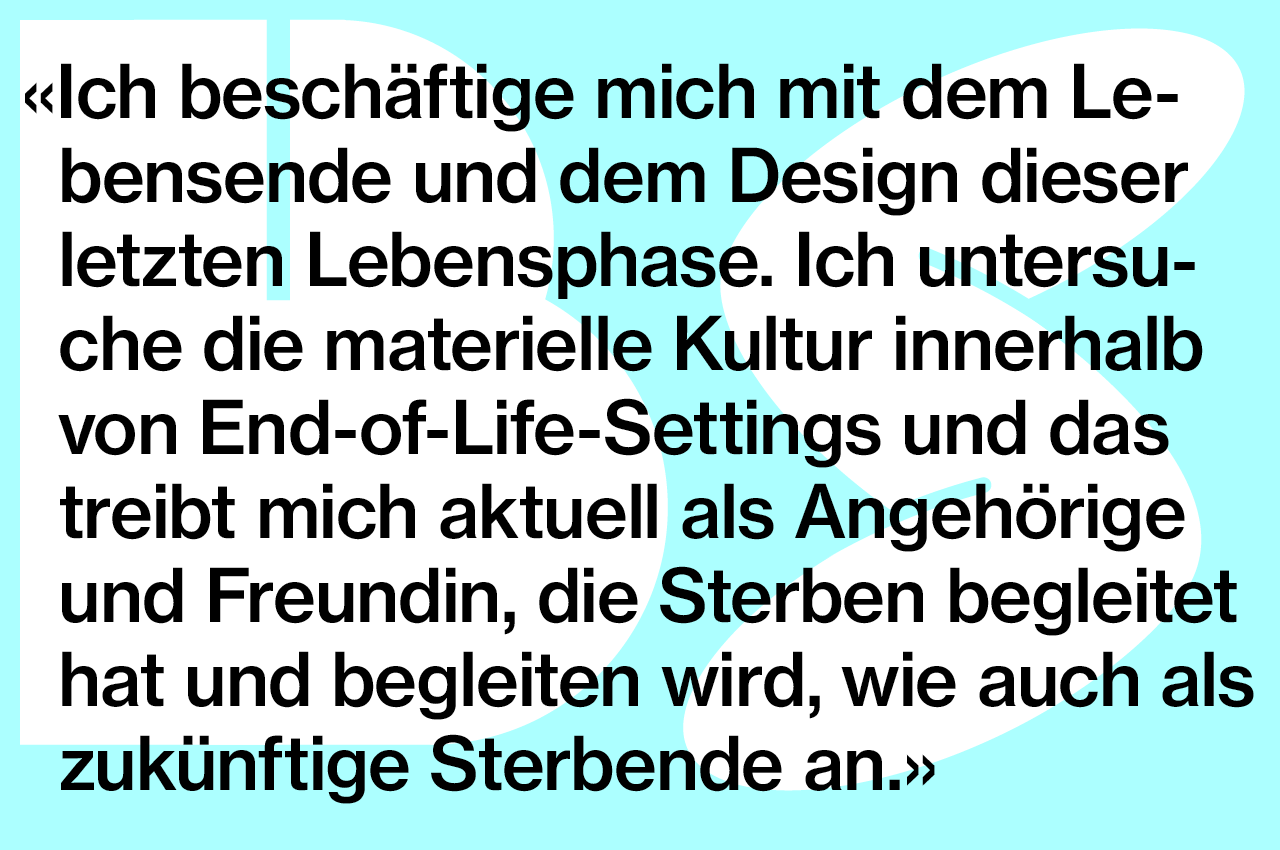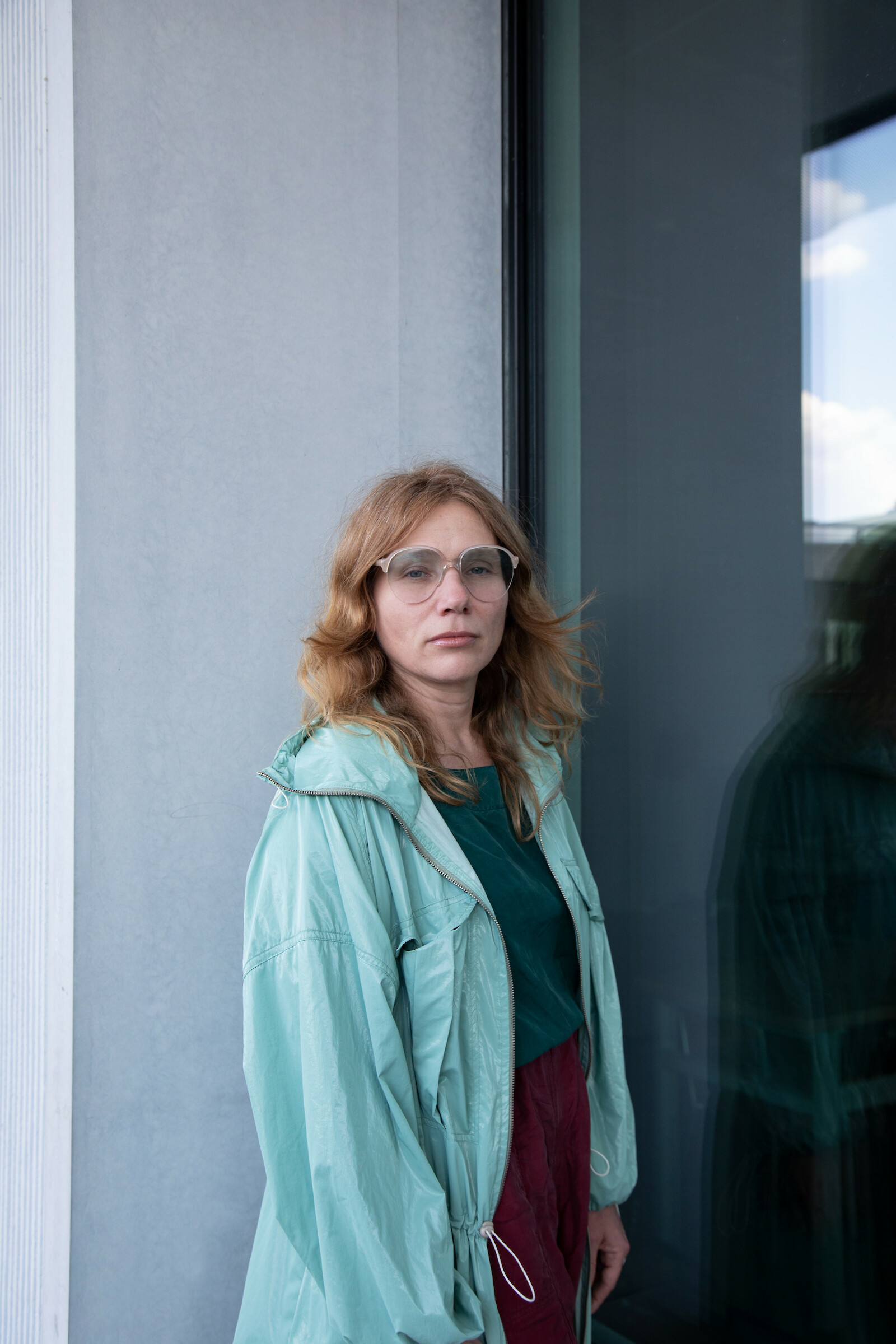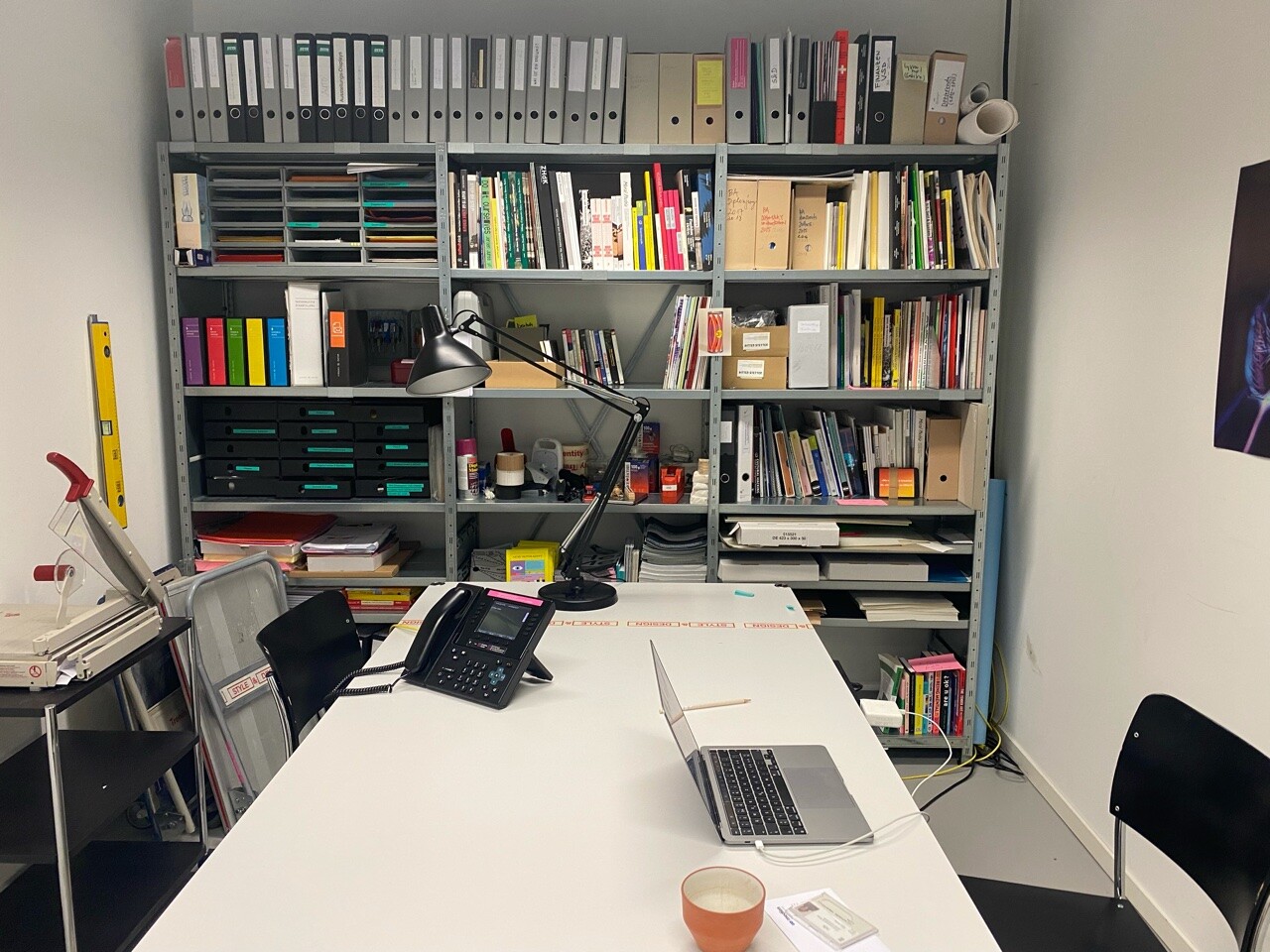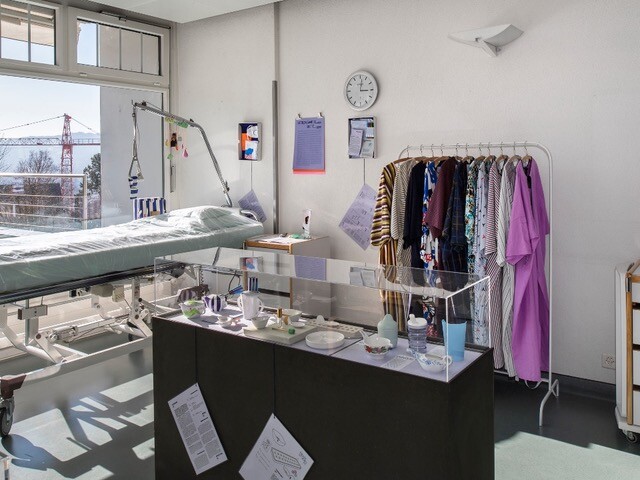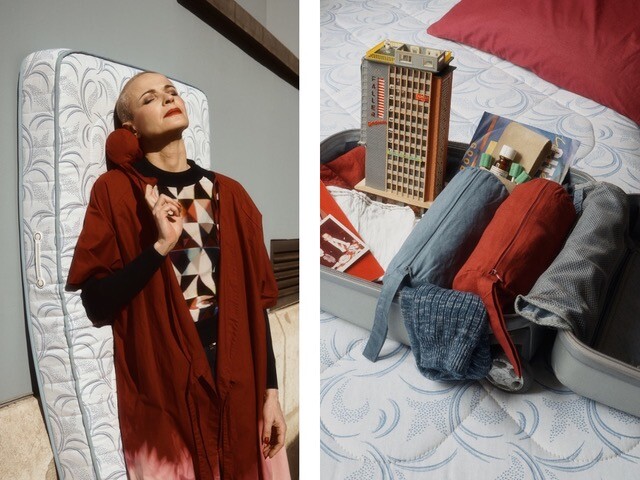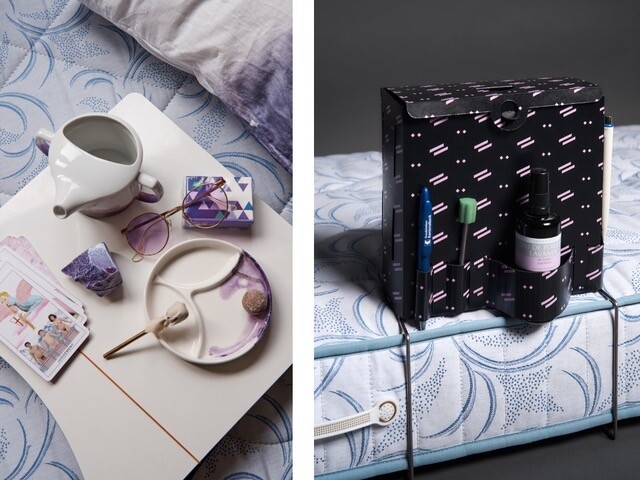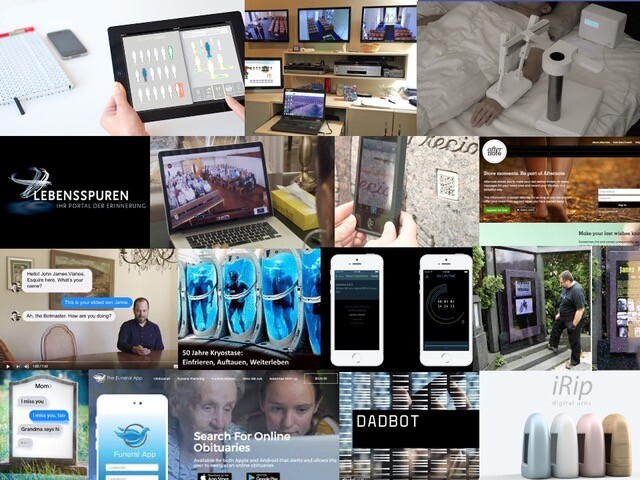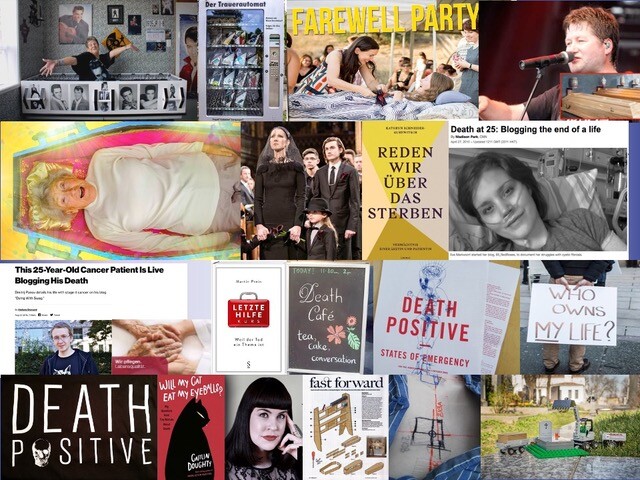Bitten Stetter
What does a typical working day involve for you?
My everyday work is determined by teaching projects, exchanges with students, leading the M.A. specialisation and research in the subject area of Trends & Identity. So when I don’t teach B.A. or M.A. classes, I have team or strategy meetings, review timetables or course content, plan new research projects, or deal with my current design research area of «DEATH + DESIGN» which is part of the research project «Death Settings» supported by the Swiss National Science Foundation (SNF). In that context, I explore the material culture at the end of life, create products and reflect on the effects that the things surrounding us have at the end of life – on seriously ill and dying people as well as their carers. I study how they influence discomfort and wellbeing, self-determination and autonomy, how they are shaped by trends and how they help form our identities in this last phase of our lives.
Where at the ZHdK can you be found?
When I am not in one of the classrooms or in the master’s studio for mentoring sessions, I am usually in my small enclosed glass room on the 4th floor, in the office of Trends & Identity. There, I can close the door every so often when I need a bit of quiet time. I really appreciate that. When the air gets too stuffy in this room without a window, or I run out of coffee, you may find me on the ramp on the 5th floor.
Which topics are you focussing on at the moment?
My current focus is on the end of life and the design in that final phase of life. I examine the material culture within end-of-life settings, and am motivated to do this as a relative and friend who has accompanied and will accompany people who are dying, as well as someone who will die themselves. I am particularly interested in how design can be used to enhance the quality of life of the dying and their relatives, to facilitate skills related to dying, and how both design and aesthetics can evoke a new way of dealing with death. In conjunction with this, I ask myself which concepts of dying are currently inscribed in professional and institutional things, and how the design of things contributes to the design of a society. Dealing with this topic is very important to me, so important in fact that I am in the process of writing a PhD thesis about it (titled «Sterbedinge») and I also create products under the label «Final Studio» in my spare time, parallel to my regular work at the university. The project is close to my heart and will surely occupy me for some time to come.
Who would you like to work with one day?
Um, I can’t say off the top of my head, but basically with people outside my bubble. I am intrigued by the other, or by others who may initially irritate me or who inhabit worlds that seem unfamiliar to me. It would be easier to say who I don’t want to work with. But I won’t do that :-).
With whom would you like to switch roles for half a year?
During my sabbatical I acted as a care assistant at the palliative care ward for several months, a demanding but also incredibly interesting experience. Unfortunately the staff there did not have the opportunity to swap their role for mine, which I think would have changed their view of my work as well. I found this very rewarding, and I learned a lot, probably more than I would have done if I had changed roles with another designer or artist. That is why I would always look for a role switch like this, if possible – but dying is unfortunately something that I can only try out when I knowingly or unknowingly reach the final stage of my life.
Another highly beneficial experience was having to or, rather, being able to attend modules in social anthropology as part of my PhD at the University of Berne. All of a sudden, I found myself sitting in auditoriums amongst B.A. and M.A. students again, having to do written exams like them, taking part in seminars, but also being able to follow classes from the student perspective. That was an eye-opener to me, and I can draw from this experience for my own taught classes :-) Ultimately, it is not about a specific role but about the idea of changing roles, which we as designers should probably always strive to do. More generally, we as people should not become too tired or set in our ways to embrace a role swap. Perhaps even the ZHdK as an institution would change dramatically if those teaching theory were to create a chair or an app, students took care of facility management, we as teachers helped out in the canteen, or if higher education and quality managers were able to closely observe dissertations, or if the university leadership set up a dissertation exhibition.
What is your personal definition of design?
In artificially designed surroundings and living environments it is perhaps more interesting to ask what is not design, i.e. what has not been artificially created, but is there naturally. It is actually very difficult to answer what design is and isn’t because the concept of design and its sphere of influence have been massively extended. Thinkers like Brock talk about «socio-design» to describe the design of values and ways of life. This definition appeals to me as it refers to the effects of design. Design can change our mindset, evoke a shift in values and thus play a part in the shaping of society. I also find the categories introduced by Friedrich von Borries inspiring in terms of what design is. He distinguishes between two types: design as subjection («unterwerfendes Design») and design as projection («entwerfendes Design»). According to von Borries, design as subjection is a form of design that reacts to existing notions, whereas design as projection actively and radically questions the status quo and creates new ideas, possibly outside the boundaries of what is currently conceivable. This definition of design and perhaps also the polemical division into two schools of thought seems very useful to me, both for emerging and established designers, because it forces us to permanently reflect on what we want to contribute, or don’t want to contribute, to what kind of society.
Where do you see the Department of Design in 2050?
There will surely be new courses in the Department that maybe right now seem like crazy or «weak» options. The teaching formats and students will also be different, in line with demographic, social, political, ecological, technological and economical changes. Intergenerational learning, diversity, remote working and health design are all key words in this regard. Considering the present-day dynamics of change and processes of acceleration, it is difficult though, if not impossible, to make a prediction about the future of the Department of Design over a time span of 30 years.
If I were to give a scenario-based answer, I would use axial mapping to outline different possible scenarios. On one axis, I would position «restrictive» and «liberal», and on the other axis, «high touch» or «high tech», or «design as subjection» and «design as projection». I would also define the key drivers such as demographic change and migration, public welfare, climate change, mental and physical health, smart technologies and AI. I would then develop scenarios and look at which desirable or non-desirable futures they would bring, and in the next step, I would try to start right now to set the course for a desirable Department of 2050. In my forward planning, I would constructively factor in wild cards such as pandemics, diseases, wars or resource crises. The specific scenarios springing from all this would have to be explored in detail with the students, as they are the future of this university and the Department of Design – myself and many of the other teachers and leading figures of my generation will hopefully no longer be at the forefront then, and will hopefully not have missed the opportunity to involve the younger generations in their reflections about the future of the Department of Design.
